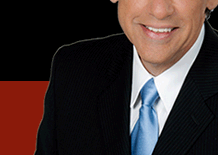|
September 7, 2005
I haven’t been in this much pain in so long; I can’t
recall when I hurt so badly. I haven’t been this shocked
since 9/11.
I have always loved New Orleans and the surrounding region.
It’s the one city I never mind visiting over and over
again. Four years ago, my wife, my youngest daughter and I
spent our first-ever Christmas away from home and we chose
the Big Easy. The choice was an easy one because the city
and its neighbors have so much to offer, so much variety of
culture, so much history, so much natural beauty, and such
great food and hospitality.
Like so many others, I can’t get my arms, or my mind,
around what I am seeing in the aftermath of Hurricane Katrina.
Except for the scum of the earth looters and other criminals
further victimizing those who have lost every material possession,
places of employment, and perhaps loved ones, no one deserves
this kind of misery, I keep telling myself.
I keep asking my God why this has happened and why so many
innocent people, especially the young and those trying to
survive in hospitals, have to deal with such brutality from
nature. What’s the point? Is it some form of punishment?
Are we really the evil empire that our enemies claim and
is this an answer to Osama Bin Laden’s prayer that Allah
destroy us and make us pay for our vicious crime of saving
a nation from the torturous reign of the Taliban? Of course
not! But it still doesn’t explain why we see people walking
in chest high water, or sitting on rooftops with no food or
water, no roads to use in search of a way out, and no electricity
to power the miracle machines that keep premature babies and
the rest of the sick alive.
I feel an overwhelming desire to do something to help. I’ve
sent a monetary contribution, the largest I have ever given,
because, except for the thieves and murders attacking their
neighbors, these are MY people – YOUR people – they
are Americans in our own back yard. I can’t offer any
skills to clear the streets, fix the broken water system,
or help repair the broken levees. My bad legs, which barely
carry me around with the help of a sturdy cane certainly are
of no use to help rescue anyone, or to stand while distributing
food, clothing or anything else that is do desperately needed
by these poor people.
At the same time, I am also frustrated by those people who
could volunteer to help these poor souls but whose only apparent
contribution to our world is to criticize the pace at which
help is being provided. Don’t these people watch the
news or, heaven-forbid, read the newspapers to see the road
system is under 10 to 20 feet of water, that the Metairie
off-ramp of Interstate 10 has become a boat launch for rescuers
because you can’t drive any further on it?
These uninformed and malcontent critics deserve a very cruel
fate, as they pontificate out of sheer ignorance and an excess
of ego-centric garbage, and they should be forced to wade
through chest-high water, with no shoes on, and feel the sting
of the hazardous pool of filthy water, gasoline, human waste,
and whatever other evil goop has been dumped into the soup-bowl
geography of what was once a beautiful city.
Gone are the beautiful tree-lined streets that offered shade,
and that the winds bent gently to seemingly offer a nod of
approval to the passing Street Car Named Desire as it took
visitors around the city to so many famous landmarks. And
these majestic trees also stood as nature’s guardians
at the home of famed author Anne Rice.
There are two major points I want to make here: 1) the sad
truths I have seen come out of this disaster; and 2) the great
truths that have emerged from all the ugliness that prove
once again, why we are the greatest nation and people on the
face of the earth.
The first sad truth is a hard one for me. I can’t begin
to convey the pain I felt as I watched a man in his 40’s,
with his two children in tow, break down as he told a reporter
he had lost his wife when their home collapsed. Clad only
in shorts and a Lakers jersey, he said, “All I have left
is my kids. My wife is gone, my house is gone, my job is gone,
there’s no electricity so the ATMs don’t work. I
have no money, all we have is the clothes on our back, and
I just don’t know what do to.”
I can’t imagine that depth of desperation. It hurts
just writing about it.
Then I saw an older man, probably in his 60’s, and the
father of three grown children, all of whom lived in areas
torn apart by Katrina. He hadn’t been able to make contact
with one daughter, another daughter and his grandchild were
missing after leaving a police station, and the third daughter
called to say she had been walking for eight miles on I-10.
The father swallowed hard as he then relayed the final words
from the third daughter. She told him, “Daddy, I love
you, but I don’t think we’re going to make it. I
just feel like I can’t go any further and I’m about
to die.”
I worry every day about our grown kids who are scattered
around the U.S. I can’t cope with the thought of losing
any of them, ever, let alone relate to a poor man who may
have lost all three of his, and a grandchild, in one horrific
day.
I’ll try to end on a positive note.
Every time there is a disaster, we have come to expect the
military to play a role in restoring peace and/or fill the
sandbags or otherwise help out. The critics of government
whom I mentioned earlier could never be satisfied at the work
of our brave men and women, either overseas or in our own
front yard. The critics despise those who are strong and brave
as a way of trying to hide their own inadequacies and lack
of self-esteem.
So I want to close with some specific information on how
our often-criticized local, regional, state, and federal government
agencies, as well as our non-profits, have responded. In addition
to swift-water rescue fire crews from Los Angeles, urban search
and rescue crews from everywhere, and of course, the great
American Red Cross, the Salvation Army, and others, I leave
you with a list of how our young military men and women responded.
The critics claimed they were nowhere to be found because
they are all in that “evil, undeclared” war in Iraq,
that “quagmire”, that “another Vietnam”.
Damn it’s nice when the truth about our great America
speaks so much louder than the droning sound of those anti-war
saps.
Beginning the day after Katrina hit, the Air Force Special
Operations Command out of Hurlburt Field, Florida flew an
MC-130 aircraft into New Orleans International Airport with
a team of special operations forces to work to reopen the
runway. A team of combat controllers (My Son was a combat
controller in Iraq and Afghanistan) and a medical team established
operations at the airport, which had no electricity or air
traffic control. The combat controllers, who are certified
air traffic controllers and special operators, usually open
airfields deep behind enemy lines or in other hazardous areas.
Using self-powered lights and other navigational aids, the
combat controllers functioned as air traffic controllers with
portable radios so that other military aircraft could land
and help evacuate around 2,500 ill, or injured people from
the New Orleans area.
The special ops guys out of Hurlburt also flew more than
34 aircraft to Jackson, Mississippi to support Hurricane Katrina
relief. They deployed 19 HH-60 Pave Hawk rescue helicopters
specifically designed to find and recover victims in hazardous
areas, and they also deployed 11 C-130 aircraft with various
special mission capabilities, including helicopter refueling
and the ability to operate from dirt or unimproved airfields.
The crews included pararescuemen and combat controllers to
work in conjunction with the aircraft. By the way, Pararescuemen
are highly trained emergency medical technician special operators.
The combat controllers and pararescuemen are accustomed to
operating in the most difficult and hostile conditions and
are trained in numerous special operations skills such as
SCUBA and parachute operations.
The same day, helicopters from the 920th Rescue Wing at Patrick
Air Force Base, Florida, carried FEMA (Federal Emergency Management
Agency) assessment teams to the areas affected by the hurricane.
One C-130J transport aircraft from the 403rd Wing at Keesler
AFB, Miss., flying out of Asheville, N.C., returned home to
the base delivering supplies to the base hospital. The 908th
Airlift Wing at Maxwell AFB, Ala., geared up two C-130s, aircrews
and aeromedical evacuation people to help move people stranded
by the hurricane damage.
A C-5 Galaxy from the 60th Air Mobility Wing, Travis AFB
Calif. and a C-17 Globe Master III from the 305th Air Mobility
Wing, McGuire AFB, NJ, transported tanker airlift control
elements and contingency support groups to Gulfport and New
Orleans International Airports respectively. Another C-5 from
Travis helped search and rescue teams from California, including
L.A. City and L.A. County swift-water pros and urban search
gurus, get to the affected area.
Fifteen HH-60s helicopters and crews from the 347th Rescue
Wing at Moody AFB, Ga., and the 16th Special Operations Wing
at Hurlburt Field, Florida were positioned near the affected
area in Jackson, Miss., and crews were credited with saving
stranded survivors of the hurricane. Additionally, Critical
Care Air Transport teams and an obstetrics team from Wilford
Hall Medical Center, San Antonio, Texas, helped patients and
expectant mothers evacuate Keesler AFB, and the surrounding
communities and the patients and pregnant women were evacuated
to Wilford Hall in Texas.
Scott Air Force Base in Illinois, home of the Tanker Airlift
Control Center, generated missions of Air Mobility Command
aircrews to help FEMA fly relief supplies to the stricken
region. They flew five strategic airlift missions into Lafayette
Regional Airport in Lafayette, La. Four of those were C-5
(Galaxys) and the other was a C-17 (Globemaster III).
A mix of active-duty, Guard and Reserve bases nationwide
flew missions that moved everything from inflatable boats
to urban search and rescue team members and their equipment.
Davis-Monthan Air Force base in Arizona sent 100 Airmen and
four HH-60G "Pave Hawk" helicopters from the 55th
Rescue Squadron to conduct search and rescue missions in support
of the hurricane relief efforts. This deployment was in addition
to the more than 100 Airmen from the 943rd Rescue Group who
also conducted rescue missions in the region.
Then there’s the group out of Robins Air Force Base in
Georgia, the 5th Combat Communications Group.
This unit provided a makeshift hospital in New Orleans with
much-needed communications networks. A priority of its relief
mission was to provide public telephone capabilities to the
medical facility. The 5th set up voice data communications,
e-mail and air traffic control communications and they also
delivered additional loads of communications equipment for
quick response to any additional needs for the relief effort
throughout the stricken areas.
The list goes on and on, and this doesn’t even include
the Army units, the four Navy ships that made their way from
Norfolk, Virginia, or the Navy medical ship Hope that steamed
its way from Baltimore down to New Orleans.
Next time you hear people complain about the military, or
that they’re not around when we need them, or that we
have too many military bases, remember the men and women of
our military who answered the call when America needed to
save the people of Louisiana, Mississippi, and Alabama.
Next time, the disaster could happen a lot closer to home
for any of us.
|

















